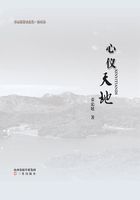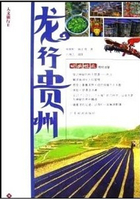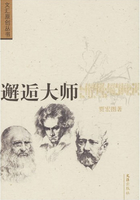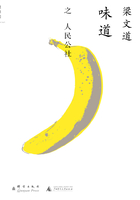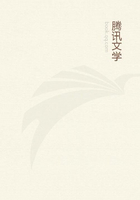According to the Buddhist classics, Wenshu (文殊菩萨) was the third son of the Holy King in charge of reincarnation. Legend has it that as Buddhists entered China, Wenshu appeared on Mt. Wutai. Therefore, people revere Mt. Wutai as the key site for Wenshu to deliver Buddhism, and monasteries there usually have his statue. Wenshu holds a sword that symbolizes his infinite Buddhist power and perfect wisdom. He rides a lion that also symbolizes his power and might. Wenshu and Puxian images are listed as close attendants to Sakyamuni image.
Notes:1)attendant陪从
12.四大天王是谁?
Who are the Four Heavenly Kings?
The Four Heavenly Kings (四大天王) are depicted as the Four Warrior Attendants (Vajras). Their origin stems from an Indian Buddhism legend which says that there is a hill called Jiantuoluo (建陀罗) situated about half way up Mt. Xumi (须弥山) in the Buddhist Western Paradise. This hill has four peaks, and each Heavenly King protects one peak. They are thus called the Four Heavenly Kings. The Lord of the East is the King of the Gandharvas (持国天王, Guardian of the Nation). He is dressed in white and holds a stringed musical instrument. The Lord of the South is the King of the Kumbhandas (增长天王, Guardian of Sprouting Growth). He is dressed in blue and holds a sword. The Lord of the West is the King of the Nagas (广目天王, Guardian of Ugly Eyes or Deformed Eyes). He is dressed in red and has a dragon in his left hand. The Lord of the North (多闻天王, Guardian of intelligence) is the best known. He is dressed in green and holds a trident in his right hand and a mongoose in his left. According to the Buddhist classics, the Four Heavenly Kings are able to drive out evil and monsters, protect Buddhas, and assure favorable conditions for the growth of crops each year. Therefore, their images are usually placed in the first main hall of a Buddhist monastery.
Notes:1)guardian保护者;2)sprout使生长;3)deformed变形的;4)intelligence智能;5)favorable称赞的
13.你对十六罗汉、十八罗汉、五百罗汉的由来知道多少?
What can be said about the legendary origin of the
Sixteen Arhats, the Eighteen Arhats and the 500
Arhats?
According to Buddhist classics, Sakyamuni’s disciples are 16 Arhats. They were instructed by the Buddha not to ascend into the Buddhist Western Paradise, but to reside in the world, where human beings take care of them, and they, in return, bring benefits to human beings. This account is based on Fazhuji (《法住记》), a Buddhist scripture translated by Tang Xuan (唐玄) that lead to the great esteem of the 16 Arhats on the part of Buddhist followers of the Han nationality. Towards the end of the Tang Dynasty, the 16 Arhats in varied editions appeared.
The evolution from the 16 Arhats to the 18 Arhats began in painting. So far we know that the earliest painting of the 18 Arhats was painted by Zhang Xuan (张玄) of the Former Shu State (前蜀, 907—925). Su Shi (苏轼) composed 18 poems to eulogize this painting, but Su Shi did not name each Arhat. A Sichuan monk named Guan Xiu (贯休) painted another 18 Arhats, and Su Shi composed another 18 poems to eulogize his painting. This time Su Shi named each Arhat, and it indicates that the rise of the Eighteen Arhats was not in accordance with the original Buddhist classics. It was artists who added two more Arhat figures to the original 16. In later generations, Buddhist followers increased the number of Arhats by unsystematically picking out names from various scriptures to make up a total of 500 Arhats. Kao Taosu of the Ming Dynasty gave a complete list of their names on his Stone Name Tablets to the 500 Arhats in Qianming Courtyard.
Notes:1)reside居住;2)evolution发展;3)eulogize颂扬;4)compose组成;5)unsystematic无系统的
14.什么是大雄宝殿?
What is the Great Buddha Hall?
The Great Buddha Hall is the main hall of a monastery. It usually has a number of huge stone pillars that support the roof, and each pillar is carved with famous Buddhist couplets. On the top of the entrance hangs a board, which says Daxiong Baodian (大雄宝殿). Daxiong means“Great Buddha”or“Great Hero”; baodian means“precious hall.”The hall contains a central altar, on which Sakyamuni sits cross-legged on a lotus throne. His two closest disciples, Kasyap (迦叶) and Ananda (阿南) flank him. In Chinese Buddhist monasteries and temples, Sakyamuni may be depicted in different positions. Seating, he is in meditation, with his left hand on his left foot and his right hand pointing downward to the earth. This suggests that Sakyamuni sacrificed in this position before he founded the Buddhist religion. Standing, he points his left hand downward and raises his right arm upward. The raised left hand signs that he is able to satisfy the wishes of all sentient beings, the right hand that he is able to save them from sufferings. Lying on his side, he stretches out his legs, with his left hand placed on them, and his head supported with his right hand. Legend has it that Sakyamuni is talking to his disciples about final arrangements just before his death.
Notes:1)altar祭坛;2)depict雕出;3)throne王位;4)su-ffering受苦的;5)stretch伸直

